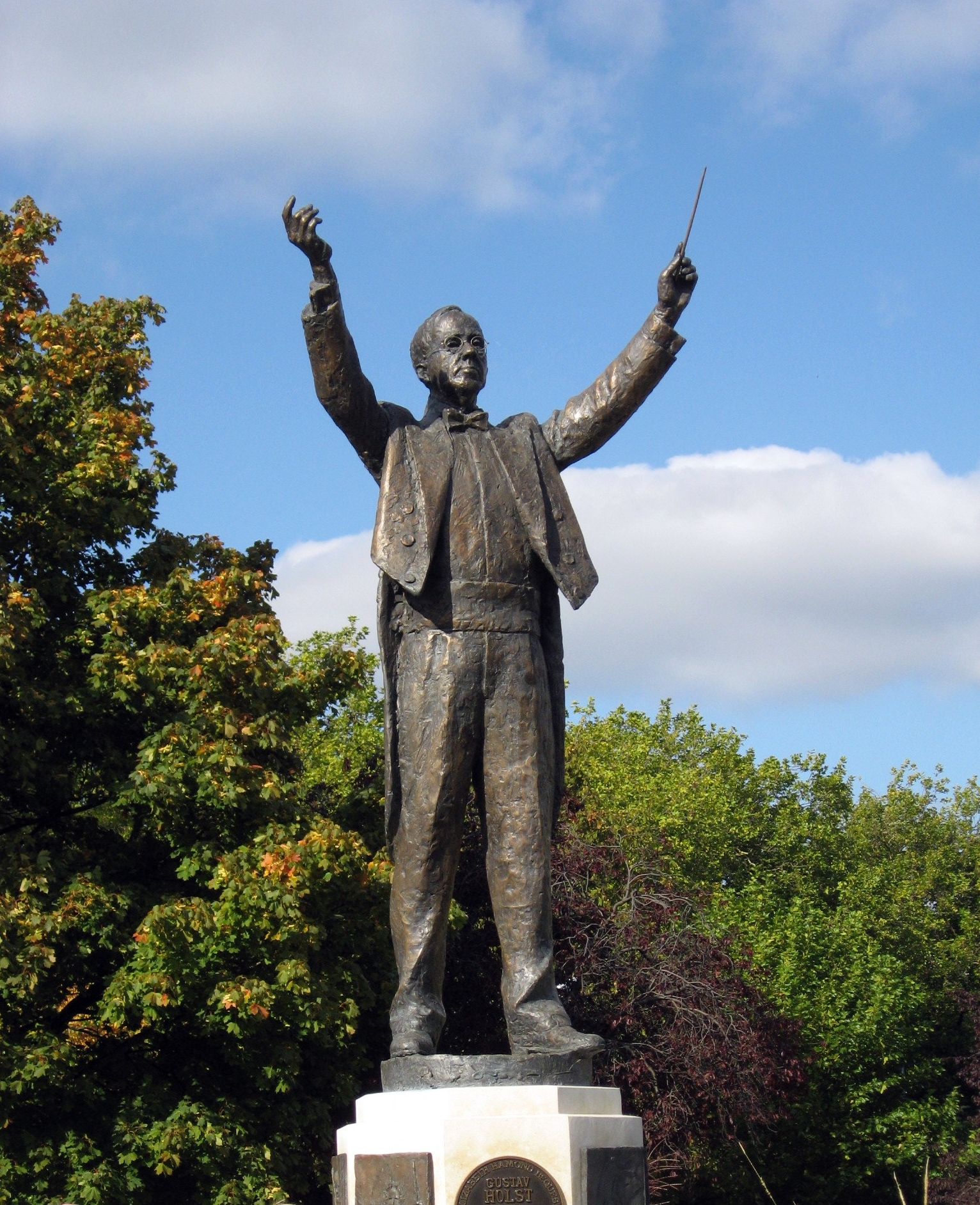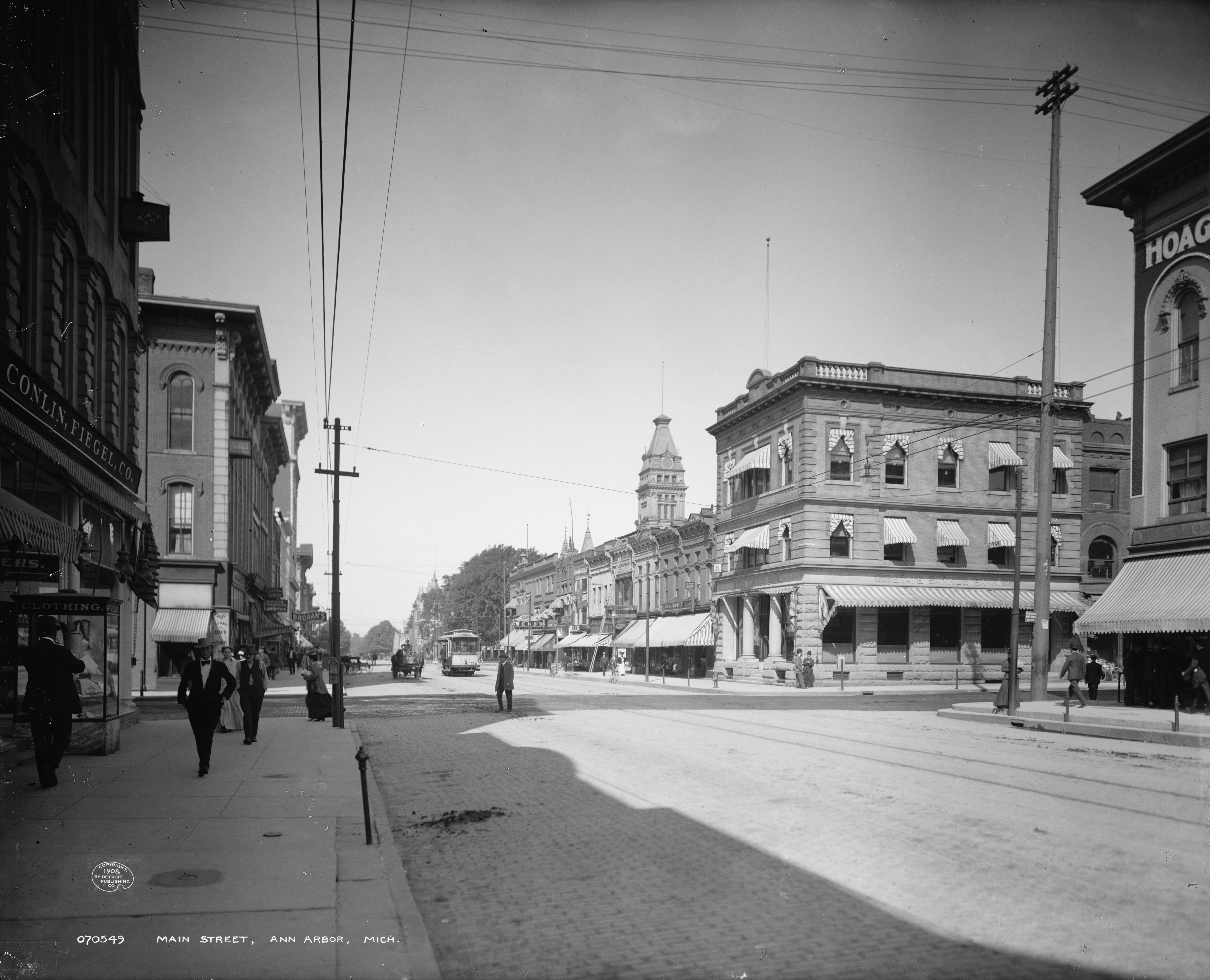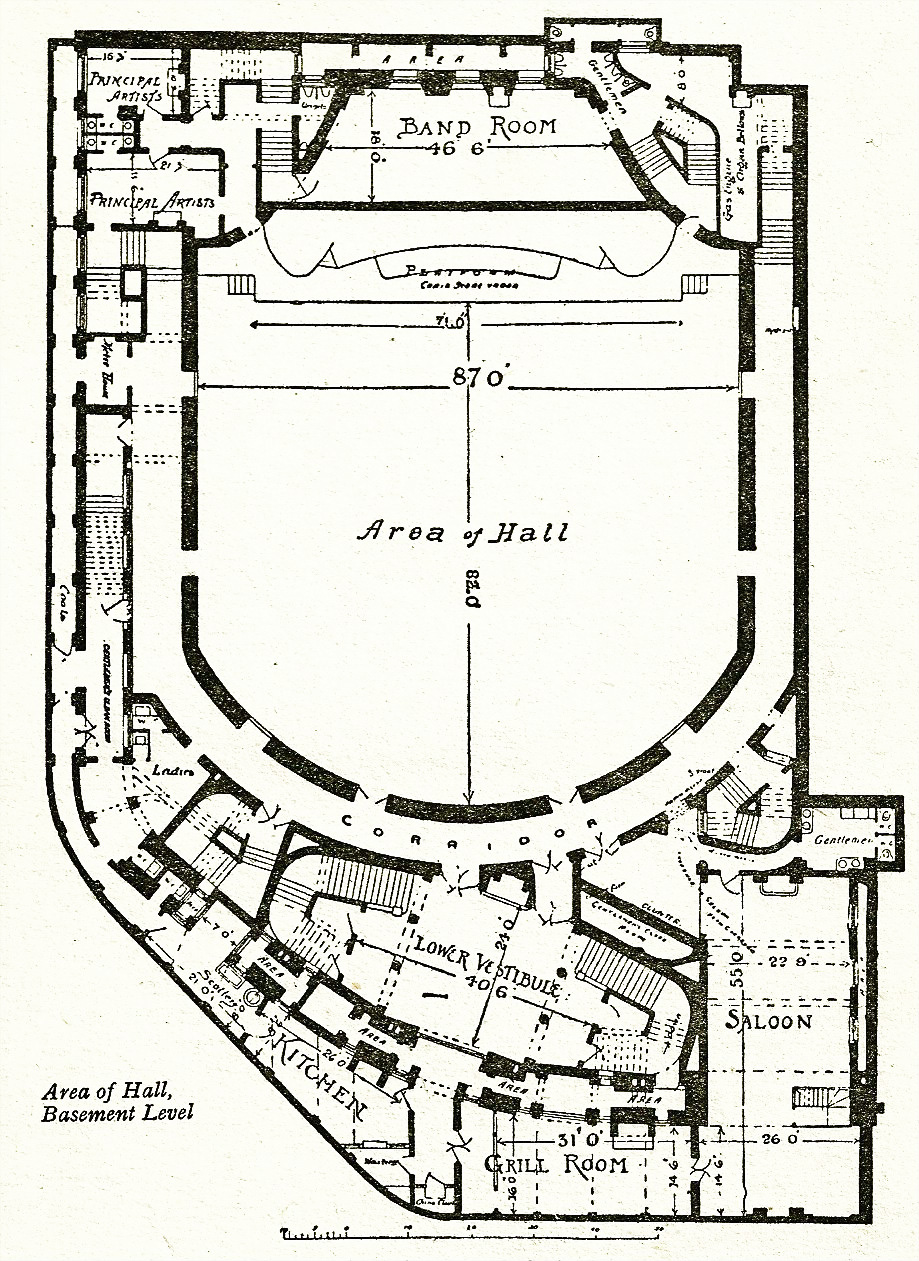|
The Hymn Of Jesus
''The Hymn of Jesus'', H. 140, Op. 37, is a sacred work by Gustav Holst scored for two choruses, semi-chorus, and full orchestra. It was written in 1917–1919 and first performed in 1920. One of his most popular and highly acclaimed compositions, it is divided into two sections. The Prelude presents the plainsong ''Pange lingua'' and ''Vexilla regis'' (both to texts by Venantius Fortunatus) first instrumentally and then chorally; the second section, the Hymn, is a setting of his own translation of the Hymn of Jesus from the Apocryphal Acts of St John. Scoring ''The Hymn of Jesus'' is scored for two mixed choirs and one women's semi-chorus, with three flutes (one doubling piccolo), two oboes, cor anglais, two clarinets, two bassoons, four horns, two trumpets, three trombones, percussion (one player – snare drum, bass drum, tambourine, cymbals), piano, celeste, organ, and strings. Holst specified that "The two choruses should be of fairly equal strength, and, if poss ... [...More Info...] [...Related Items...] OR: [Wikipedia] [Google] [Baidu] |
Gustav Holst
Gustav Theodore Holst (born Gustavus Theodore von Holst; 21 September 1874 – 25 May 1934) was an English composer, arranger and teacher. Best known for his orchestral suite ''The Planets'', he composed many other works across a range of genres, although none achieved comparable success. His distinctive compositional style was the product of many influences, Richard Wagner and Richard Strauss being most crucial early in his development. The subsequent inspiration of the English folk music#Folk revivals 1890–1969, English folksong revival of the early 20th century, and the example of such rising modern composers as Maurice Ravel, led Holst to develop and refine an individual style. There were professional musicians in the previous three generations of Holst's family and it was clear from his early years that he would follow the same calling. He hoped to become a pianist, but was prevented by neuritis in his right arm. Despite his father's reservations, he pursued a car ... [...More Info...] [...Related Items...] OR: [Wikipedia] [Google] [Baidu] |
Clifford Bax
Clifford Lea Bax (13 July 1886 – 18 November 1962)Armorial Families: A Directory of Gentlemen of Coat-Armour, A. C. Fox-Davies, T. C. & E. C. Jack, 1910, p. 106 was a versatile English writer, known particularly as a playwright, a journalist, critic and editor, and a poet, lyricist and hymn writer. He also was a translator (for example, of Goldoni). The composer Arnold Bax was his brother, and set some of his words to music. Life The youngest son of Alfred Ridley Bax (1844–1918) and his wife, Charlotte Ellen (1860–1940), daughter of Rev. William Knibb Lea, of Amoy, China,Foreman, Lewis"Bax, Sir Arnold Edward Trevor" Oxford Dictionary of National Biography, Oxford University Press, 2004, retrieved 16 September 2015 Bax was born in Upper Tooting, south London (not Knightsbridge, as sometimes stated). His father was a barrister of the Middle Temple, but having a private income he did not practise. In 1896 the family moved to a mansion in Hampstead. He was educated at th ... [...More Info...] [...Related Items...] OR: [Wikipedia] [Google] [Baidu] |
Southwark Cathedral
Southwark Cathedral ( ) or The Cathedral and Collegiate Church of St Saviour and St Mary Overie, Southwark, London, lies on the south bank of the River Thames close to London Bridge. It is the mother church of the Anglican Diocese of Southwark. It has been a place of Christian worship for more than 1,000 years, but a cathedral only since the creation of the diocese of Southwark in 1905. Between 1106 and 1538 it was the church of an Augustinian priory, Southwark Priory, dedicated to the Virgin Mary (St. Mary's – over the river). Following the dissolution of the monasteries, it became a parish church, with the new dedication of St Saviour's. The church was in the diocese of Winchester until 1877, when the parish of St Saviour's, along with other South London parishes, was transferred to the diocese of Rochester. The present building retains the basic form of the Gothic structure built between 1220 and 1420, although the nave is a late 19th-century reconstruction. History Lege ... [...More Info...] [...Related Items...] OR: [Wikipedia] [Google] [Baidu] |
Ann Arbor, Michigan
Ann Arbor is a city in the U.S. state of Michigan and the county seat of Washtenaw County, Michigan, Washtenaw County. The 2020 United States census, 2020 census recorded its population to be 123,851. It is the principal city of the Ann Arbor List of metropolitan statistical areas, Metropolitan Statistical Area, which encompasses all of Washtenaw County. Ann Arbor is also included in the Metro Detroit, Greater Detroit Combined statistical area, Combined Statistical Area and the Great Lakes megalopolis, the most populated and largest Megaregions of the United States, megalopolis in North America. Ann Arbor is home to the University of Michigan. The university significantly shapes Ann Arbor's economy as it employs about 30,000 workers, including about 12,000 in the University of Michigan Health System, medical center. The city's economy is also centered on high technology, with several companies drawn to the area by the university's research and development infrastructure. Ann A ... [...More Info...] [...Related Items...] OR: [Wikipedia] [Google] [Baidu] |
Hugh Allen (conductor)
Sir Hugh Percy Allen (23 December 186920 February 1946) was an English musician, academic, and administrator. He was a leading influence on British musical life in the first half of the 20th century. Early life and education Hugh Allen was born in Reading, Berkshire, the youngest of seven children of John Herbert Allen (1834–1905), who worked for biscuit makers Huntley & Palmer, and Rebecca (1836–1919), daughter of Samuel Bevan Stevens, of the firm of Huntley, Bourne & Stevens, which manufactured tins for Huntley & Palmer. His musical talent was apparent from an early age, and at 11 he was organist of a local parish church. He was educated at Kendrick School, Reading, and won an organ scholarship to Christ's College, Cambridge, graduating BA from Cambridge in 1895. He became cathedral organist at St Asaph Cathedral and then Ely Cathedral, before, in 1901, becoming organist of New College, Oxford, where he revitalised the musical life of the University.''The Times'', 21 F ... [...More Info...] [...Related Items...] OR: [Wikipedia] [Google] [Baidu] |
Royal Choral Society
The Royal Choral Society (RCS) is an amateur choir, based in London. History Formed soon after the opening of the Royal Albert Hall in 1871, the choir gave its first performance as the Royal Albert Hall Choral Society on 8 May 1872 – the choir's first conductor Charles Gounod included the ''Hallelujah Chorus'' from ''Messiah'' in the inaugural concert. On 9 July 1891, the Royal Choral Society performed in a 'Grand Concert for the Visit of Their Imperial Majesties, The German Emperor and Empress', also attended by the Prince of Wales and the Duke and Duchess of Edinburgh. From the beginning, performing premieres of new choral works has been a feature of the choir's repertoire. Both Giuseppe Verdi and Antonín Dvořák conducted the choir in premières of their own works, as have Edward Roxborough, Ariel Ramírez, Raymond Premru and Geoffrey Burgon in more recent years. The choir continued to be conducted by the most eminent musicians of the day, most notably Sir Malcolm Sargen ... [...More Info...] [...Related Items...] OR: [Wikipedia] [Google] [Baidu] |
Royal Albert Hall
The Royal Albert Hall is a concert hall on the northern edge of South Kensington, London. One of the UK's most treasured and distinctive buildings, it is held in trust for the nation and managed by a registered charity which receives no government funding. It can seat 5,272. Since the hall's opening by Queen Victoria in 1871, the world's leading artists from many performance genres have appeared on its stage. It is the venue for the BBC Proms concerts, which have been held there every summer since 1941. It is host to more than 390 shows in the main auditorium annually, including classical, rock and pop concerts, ballet, opera, film screenings with live orchestral accompaniment, sports, awards ceremonies, school and community events, and charity performances and banquets. A further 400 events are held each year in the non-auditorium spaces. Over its 151 year history the hall has hosted people from various fields, including meetings by Suffragettes, speeches from Winston Churchi ... [...More Info...] [...Related Items...] OR: [Wikipedia] [Google] [Baidu] |
Three Choirs Festival
200px, Worcester cathedral 200px, Gloucester cathedral The Three Choirs Festival is a music festival held annually at the end of July, rotating among the cathedrals of the Three Counties (Hereford, Gloucester and Worcester) and originally featuring their three choirs, which remain central to the week-long programme. The large-scale choral repertoire is now performed by the Festival Chorus, but the festival also features other major ensembles and international soloists. The 2011 festival took place in Worcester from 6 to 13 August. The 2012 festival in Hereford took place earlier than usual, from 21 to 28 July, to avoid clashing with the 2012 Summer Olympics. The event is now established in the last week of July. The 300th anniversary of the original Three Choirs Festival was celebrated during the 2015 festival, which took place from 25 July to 1 August in Hereford (the landmark 300th meeting of the Three Choirs does not fall until after 2027 due to there being no Three Choirs Fes ... [...More Info...] [...Related Items...] OR: [Wikipedia] [Google] [Baidu] |
Royal Philharmonic Orchestra
The Royal Philharmonic Orchestra (RPO) is a British symphony orchestra based in London, that performs and produces primarily classic works. The RPO was established by Thomas Beecham in 1946. In its early days, the orchestra secured profitable recording contracts and important engagements including the Glyndebourne Festival Opera and the concerts of the Royal Philharmonic Society. After Beecham's death in 1961, the RPO's fortunes declined steeply. The RPO battled for survival until the mid-1960s, when its future was secured after a report by the Arts Council of Great Britain recommended that it should receive public subsidy. A further crisis arose in the same era when it seemed that the orchestra's right to call itself "Royal" could be withdrawn. In 2004, the RPO acquired its first permanent London base, at Cadogan Hall in Chelsea. The RPO also gives concerts at the Royal Festival Hall, the Royal Albert Hall and venues around the UK and other countries. The current music dir ... [...More Info...] [...Related Items...] OR: [Wikipedia] [Google] [Baidu] |
Queen's Hall
The Queen's Hall was a concert hall in Langham Place, London, opened in 1893. Designed by the architect Thomas Knightley, it had room for an audience of about 2,500 people. It became London's principal concert venue. From 1895 until 1941, it was the home of the promenade concerts ("The Proms") founded by Robert Newman together with Henry Wood. The hall had drab decor and cramped seating but superb acoustics. It became known as the "musical centre of the ritishEmpire", and several of the leading musicians and composers of the late 19th and early 20th centuries performed there, including Claude Debussy, Edward Elgar, Maurice Ravel and Richard Strauss. In the 1930s, the hall became the main London base of two new orchestras, the BBC Symphony Orchestra and the London Philharmonic Orchestra. These two ensembles raised the standards of orchestral playing in London to new heights, and the hall's resident orchestra, founded in 1893, was eclipsed and it disbanded in 1930. The new ... [...More Info...] [...Related Items...] OR: [Wikipedia] [Google] [Baidu] |
Royal College Of Music
The Royal College of Music is a music school, conservatoire established by royal charter in 1882, located in South Kensington, London, UK. It offers training from the Undergraduate education, undergraduate to the Doctorate, doctoral level in all aspects of Western Music including performance, composition, conducting, music theory and history. The RCM also undertakes research, with particular strengths in performance practice and performance science. The college is one of the four conservatories of the ABRSM, Associated Board of the Royal Schools of Music and a member of Conservatoires UK. Its buildings are directly opposite the Royal Albert Hall on Prince Consort Road, next to Imperial College and among the museums and cultural centres of Albertopolis. History Background The college was founded in 1883 to replace the short-lived and unsuccessful National Training School for Music (NTSM). The school was the result of an earlier proposal by the Albert, Prince Consort, Prince Con ... [...More Info...] [...Related Items...] OR: [Wikipedia] [Google] [Baidu] |
Carnegie Collection Of British Music
__NOTOC__ The Carnegie Collection of British Music was founded in 1917 by the Carnegie United Kingdom Trust, Carnegie Trust to encourage the publication of large scale British musical works. Composers were asked to submit their manuscripts to an anonymous panel. On the panel at various times were Hugh Allen (conductor), Hugh Allen, Granville Bantock, Arnold Bax, Dan Godfrey, Henry Hadow and Donald Tovey.Craggs, Stewart R. 'Felix White, a centenary note' in ''Musical Times'', April 1984, p 207-8 Up to six works per year were chosen for an award – publication at the expense of the Trust, in conjunction with music publishers Stainer & Bell. Unfortunately the war delayed things for the earliest prizewinners. The first to be published (in 1918) was the Piano Quartet in A minor by Herbert Howells. (It caught the attention of the young William Walton, who successfully submitted his own Piano Quartet to the panel six years later). By the end of 1920 some 13 works were available. 30 were o ... [...More Info...] [...Related Items...] OR: [Wikipedia] [Google] [Baidu] |








